第一讲 翻译原则简介
- 格式:doc
- 大小:203.50 KB
- 文档页数:39

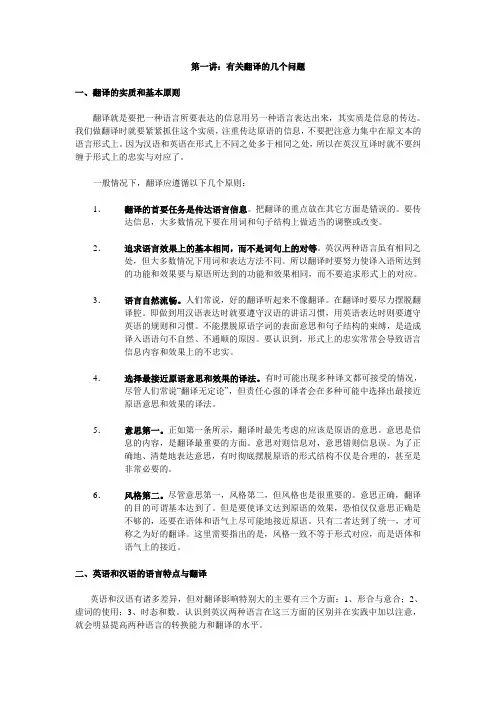
第一讲:有关翻译的几个问题一、翻译的实质和基本原则翻译就是要把一种语言所要表达的信息用另一种语言表达出来,其实质是信息的传达。
我们做翻译时就要紧紧抓住这个实质,注重传达原语的信息,不要把注意力集中在原文本的语言形式上。
因为汉语和英语在形式上不同之处多于相同之处,所以在英汉互译时就不要纠缠于形式上的忠实与对应了。
一般情况下,翻译应遵循以下几个原则:1.翻译的首要任务是传达语言信息。
把翻译的重点放在其它方面是错误的。
要传达信息,大多数情况下要在用词和句子结构上做适当的调整或改变。
2.追求语言效果上的基本相同,而不是词句上的对等。
英汉两种语言虽有相同之处,但大多数情况下用词和表达方法不同。
所以翻译时要努力使译入语所达到的功能和效果要与原语所达到的功能和效果相同,而不要追求形式上的对应。
3.语言自然流畅。
人们常说,好的翻译听起来不像翻译。
在翻译时要尽力摆脱翻译腔。
即做到用汉语表达时就要遵守汉语的讲话习惯,用英语表达时则要遵守英语的规则和习惯。
不能摆脱原语字词的表面意思和句子结构的束缚,是造成译入语语句不自然、不通顺的原因。
要认识到,形式上的忠实常常会导致语言信息内容和效果上的不忠实。
4.选择最接近原语意思和效果的译法。
有时可能出现多种译文都可接受的情况,尽管人们常说“翻译无定论”,但责任心强的译者会在多种可能中选择出最接近原语意思和效果的译法。
5.意思第一。
正如第一条所示,翻译时最先考虑的应该是原语的意思。
意思是信息的内容,是翻译最重要的方面。
意思对则信息对,意思错则信息误。
为了正确地、清楚地表达意思,有时彻底摆脱原语的形式结构不仅是合理的,甚至是非常必要的。
6.风格第二。
尽管意思第一,风格第二,但风格也是很重要的。
意思正确,翻译的目的可谓基本达到了。
但是要使译文达到原语的效果,恐怕仅仅意思正确是不够的,还要在语体和语气上尽可能地接近原语。
只有二者达到了统一,才可称之为好的翻译。
这里需要指出的是,风格一致不等于形式对应,而是语体和语气上的接近。
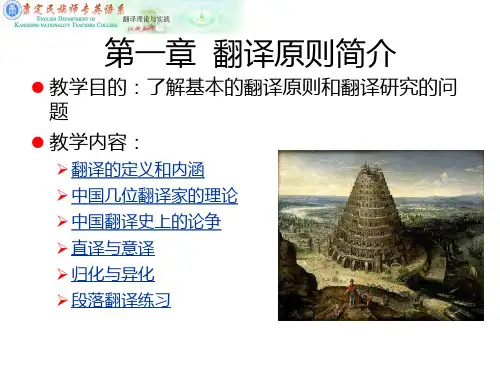
![汉英笔译基础教程第1章 翻译原则[精]](https://uimg.taocdn.com/7b18a85b83c4bb4cf6ecd11a.webp)


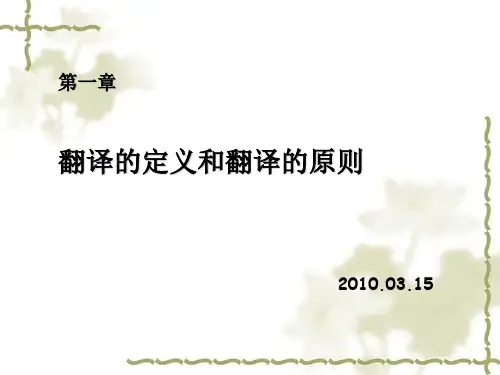
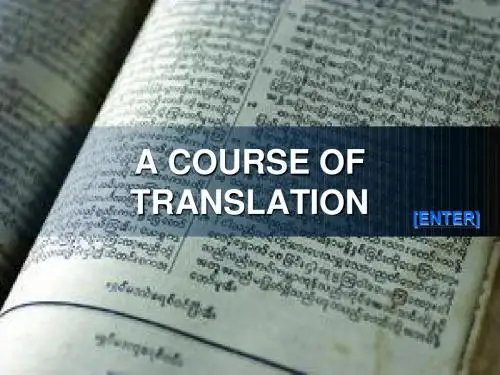
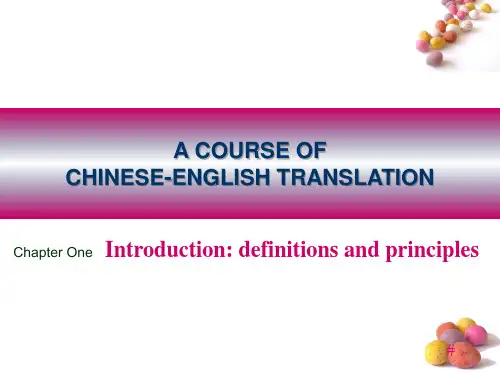
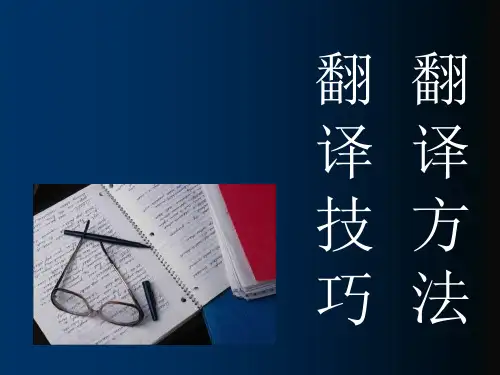

翻译概论Chapter1-2从翻译的比喻认识翻译的本质及翻译的原则Chapter1----从翻译的比喻认识翻译的本质1.第一章内容概述1)翻译的重要性(对翻译和翻译家的种种比喻):普希金------“人类精神的传递者。
”歌德------“世界上全部交际来往中最重要、最高贵的事业之一。
”理查兹------“整个宇宙中最为复杂的活动之一”人类自有语言交流以来,翻译活动也就一直相伴相随。
翻译不仅使得人类各种语言与文化之间的沟通成为可能,而且还帮助推动人类社会不断向文明的更高阶段发展。
2)从对翻译或翻译者的宏观比喻来看翻译的本质(1)对翻译或者翻译者总体或宏观的比喻;歌德------翻译家应是“忙碌的媒人”钱钟书------将翻译比作“做媒”《翻译、历史与文化》------把翻译比作婚姻翻译者还被比喻成“像一位雕塑家,用雕塑再现油画作品的形象”,也是“珍宝的发现者”或是“掘金者”。
在西方,翻译家数百年来也把自己的工作比喻成“把一个酒瓶里的酒倒到另一个酒瓶里去”,翻译并不是简简单单“倒酒”的机械动作,而是一个需要翻译者在艺术上有所倾注的复杂微妙的过程。
(2)从对翻译操作过程的比喻来看翻译的本质①把翻译比作渡河——船是要翻译的文本,领航者是翻译者,渡河的行程便是翻译的过程,河的两岸分别就是原语与译入语的文化。
②美国翻译家Margaret Sayers Peden把原作想象成一块方方正正的冰,翻译的过程就是这块冰的熔化过程。
这个比喻借用了自然科学对物质从一种状态变成另一种状态的描述,十分生动,也颇富揭示性。
③对翻译,另一种最新的、更具揭示性的比喻是“没有舞台的演④巴西翻译家——“食人者”对翻译者或者翻译的种种比喻尽管五花八门,但都有一个明显的特征,即它们基本上都是正面的,都包含对翻译者工作的褒扬,是确实还有少数比喻表达了对翻译或翻译者的否定或批评;如“翻译即背叛者等”。
2)翻译的本质翻译是一种文化传播的工具,在国与国之间、原语文化与译入语文化之间起着桥梁和纽带的作用;翻译不仅仅是文本从一种语言向另一种语言的过渡,也是文本之间、文化之间的一种协商过程,是以翻译者为中间人进行交流和斡旋的过程;翻译不仅仅是一门涉及语符转换、意义传递的技巧或技艺,更是一项极富创造性、挑战性的活动,是“一种艺术,一种需要译者像画家、表演家”那样具有高超创作才能的艺术。
翻译原则及技巧范文
中文翻译的原则和技巧包括以下几点:
1.保持文义准确性:翻译时要尽力保持原文的意思和信息的准确性。
2.理解文化差异:考虑到不同文化背景对语言的影响,翻译时要注意文化差异的存在,避免对读者产生误解。
3.注意语法和语义:中文有其独特的语法和语义规则,翻译时要注意词语和句子的结构,使得翻译结果符合中文的表达习惯。
4.考虑读者的背景:翻译时要考虑目标读者的背景和知识水平,选择适当的词汇和表达方式,以确保读者能够理解翻译内容。
5.保持风格一致性:如果原文有一定的文体和风格,翻译时要尽量保持一致,使得翻译结果在语言风格上与原文保持一致。
6.使用适当的辅助工具:翻译时可以借助各种辅助工具如在线词典、翻译软件等,但要注意辅助工具的局限性,需仔细核对翻译结果。
以上原则和技巧可以帮助翻译者更好地进行中文翻译,提高翻译质量和准确性。
第一讲翻译原则简介一、教学目的:了解基本的翻译原则和翻译研究的问题二、教学过程:1.翻译的定义和内涵:(Definition and Connotation)Translation is an art/ science/craft?2.中国几位翻译家的理论(influential translation principles):严复:信达雅--- faithfulness/expressiveness/elegance. The “three character guide”is regarded as a plumb-line of long standing to measure the professional level of translating.傅雷:神似---spiritual conformity. Emphasizing the reproduction of the spirit of the flavor of the original.强调原作神韵再现。
钱钟书:化境---sublimed adaptation. Focus on the translator’s smooth and idiomatic Chinese version for the sake of the Chinese reader.刘重德:信、达、切---faithfulness/expressiveness/closeness.3.中国翻译史上的论争:鲁迅:宁信而不顺---rather to be faithful than smooth。
目的:引入英文句式的表达法梁实秋、赵景深:宁顺而不信---rather to be smooth than faithful 目的:可读性强,便于交流。
4.直译与意译:直译---literal translation 意译:free translation直译的例子:crocodile tears鳄鱼的眼泪; armed to the teeth武装到牙齿; chain reaction连锁反应; gentlemen’s agreement君子协定; one country, two systems 一国两制;The three religions and the nine schools of thought 三教九流; paper tiger 纸老虎; Breath one’s last---断气; go to one’s external rest---安息; the long sleep---长眠; see Marx 见马克思;意译的例子:It rains cats and dogs / at sixes and sevens /Adam’s apple句子比较:Little fish does not eat big fish直译:小鱼不吃大鱼意译:胳膊拧不过大腿试译:天有不测风云,人有旦夕祸福:直译:Storms gather without warning in nature and bad luck befalls men overnight.意译:The weather and human life are both unpredictable5.归化与异化(domestication/adaptation or foreignization / alienation)归化的翻译在理论上是把语言看作交际工具;在实践上,强调通俗易懂,避免多义或歧义。
习惯认为,当原文与译文之间因文化差异而出现不能通达的情况时,“要用译语文化替代原语文化”即把在译语中找不到对等的外语词汇改头换面,或套用译语中与之相似的现成的表达法,把它们变成读者熟悉的译语文化形象。
归化派代表人物尤金•奈达(Eugene A. Nida): Functional Equivalence 功能对等What is functional equivalence?“The receptors of the translated text could respond to it with comprehension and appreciation in essentially the same manner and to the same degree as the original receptors of the message”;“Translation should arouse the same feeling in its receptors as the feeling of the readers of theoriginal”---- Nida6.翻译练习:要爱国要使国家富强是每个公民的责任。
为了达到此目的,必须爱国。
我认为这是一条不易的定理。
一个学生如何才能爱国呢?我发觉答复很简单明了。
他必须用功读书并积储知识以便将来服务国家。
如果每个学生能按照我所说的去做,国家一定会富强。
诚为上策英国有一句谚语说“诚为上策”。
它说明了诚的重要性。
诚的益处是什么?如果你对他人诚实,他们也会对你诚实作为报答。
当你忧悉的时候,他们会安慰你。
当你是处在困难中的时候,他们会帮助你。
无法在这里数述不诚实的害处。
一言以蔽之,一个不诚实的人会被人看轻的而且被看作为一个公敌。
KEY1. be patrioticit is the duty of every citizen to make the country rich and powerful (to make the country rich and strong is...). in order to accomplish this object one must be patriotic (love his country). i consider this an unchangeable truth. how can a student love his country (be patriotic)? i find my answer very simple and clear. he must study hard and store up knowledge so as to serve his (the) country in the future. if every student can do according to what i said, the country will certainly be rich and powerful.2. honesty is the best policy 诚为上策there is an english proverb which says (saying) “honesty is the best policy.” it signifies the importance of honesty. what are the benefits of honesty? if you are honest to others, they will be honest to you in return. when you are sad, they will comfort you. when you are in trouble, they will help you. there is no enumerating the evils of dishonesty here. in a word, a dishonest man will be looked down upon by others and (be) regarded as a public enemy第二讲翻译的过程一、教学目的:怎样去理解和表达;学会表达的基本策略。
二、教学过程:1.理解与表达:He found them pushing needles, thread, pots, pans, ribbons, yarns, scissors and buttons to house wives.他发现他们在向家庭主妇推销针头线脑,锅碗瓢盆。
(国外没有瓢)改为:他发现他们在向家庭主妇推销针线,锅罐,绸带,剪刀和钮扣。
Do you see any green in my eye? 你以为我是好欺骗的吗?It is an order from President Bush/ I don‟t care if it is from bush, tree, or grass.这是布什总统的命令,管他什么布什,布头儿,布片儿,我才不在乎呢。
The old man‟s heart missed a beat when he saw the pearl.这位老人一看到这颗珍珠高兴得连心都跳不过来。
A good dancer never missed a beat.善于跳舞的人从不漏跳一拍(总能跟上节拍/总能采对步点)If we don‟t hang together, they shall hang us separately.The market in China is an almost bottomless pit.中国的市场几乎是个无底洞。
/ 中国的市场无限巨大。
2.切不可望文生义If not:( possibly, perhaps)In Europe, Hitler‟s name was well known, if not a household word.在欧洲,希特勒的名字纵使不是家喻户晓,也很响亮。
/ 在欧洲,希特勒的名字广为人知,也可以说家喻户晓。
Such a mistake could cost us thousands, if not millions of pounds.这种失误能够造成我们几千磅,或许几百万磅的损失。
Not to say: indeed or possibly, even。
It is warm, not to say hot. 天气很暖和,甚至有点儿热。
The answer is illogical, not to say totally wrong.答案不合逻辑,甚至是完全错误的。
It would be unwise, not to say stupid to leave your first job after only six months.初次工作刚六个月就想辞掉它,这样做很不明智,甚至可以说很愚蠢。
3. 习惯与表达Anna was thin and black, a very umbrella of a woman.安娜是一个又瘦又黑的女人,上身粗大,下身细长。